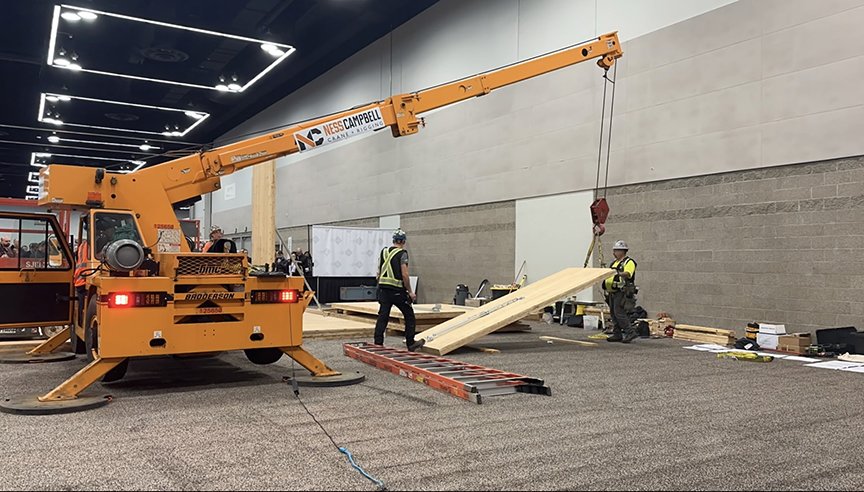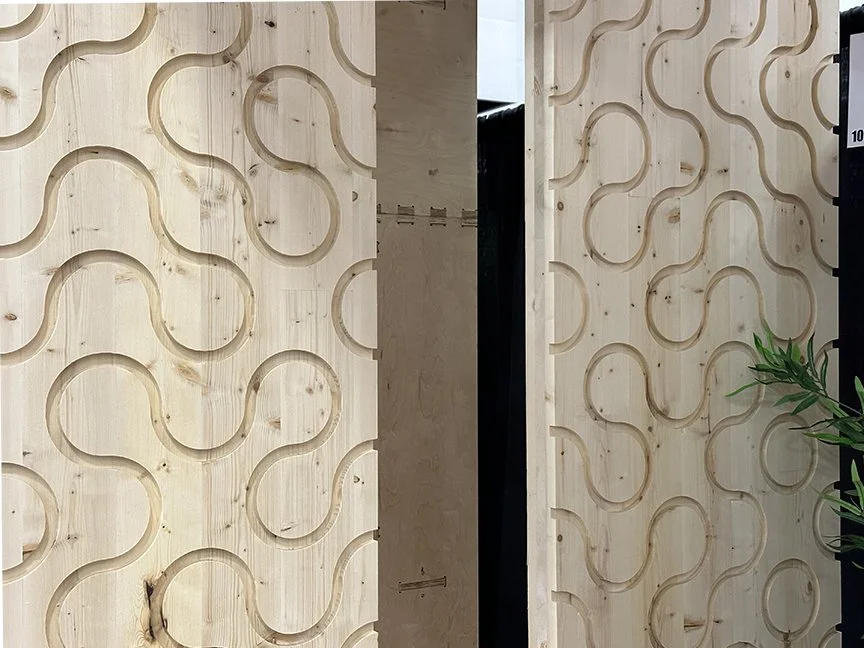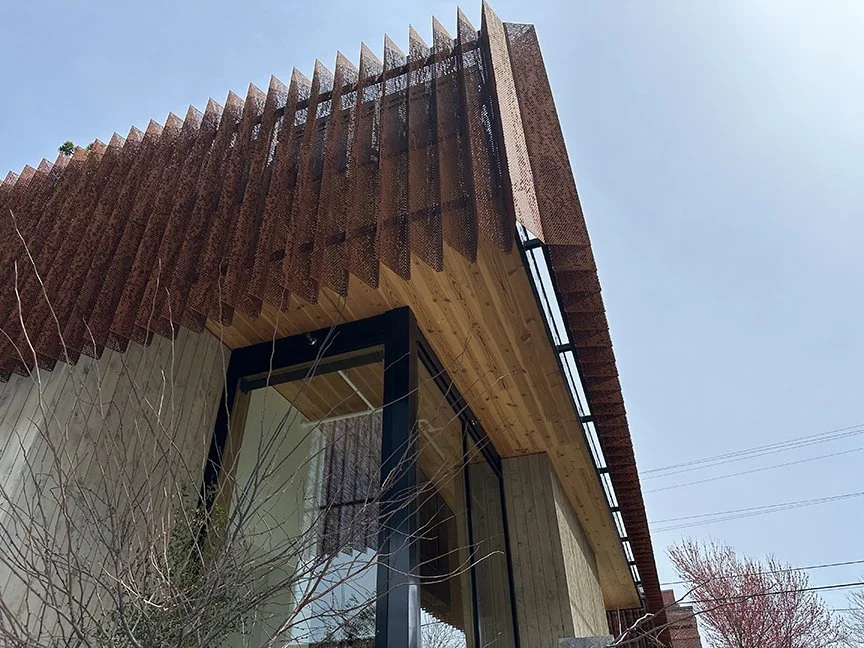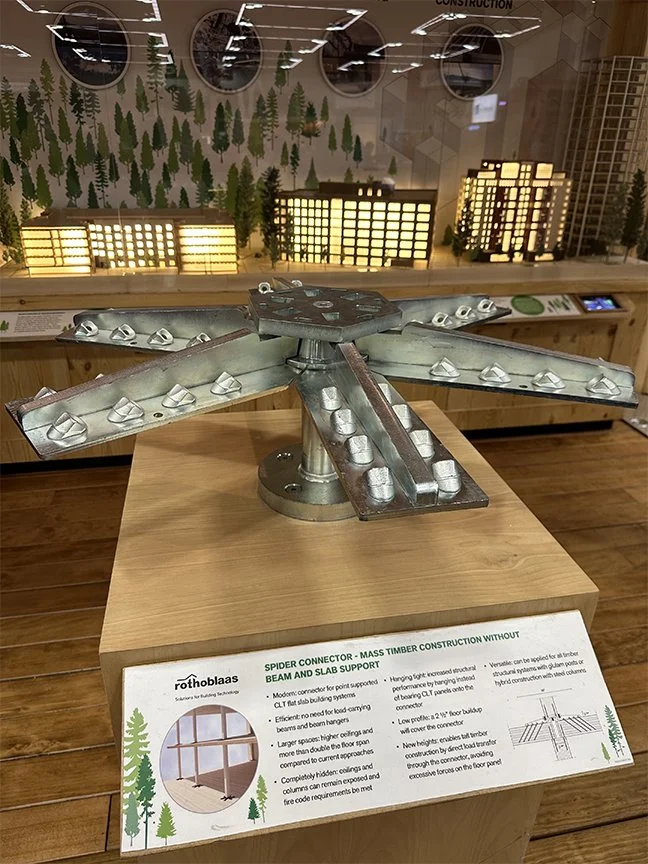Cutting the (Timber) Edge
BY CONOR MCMICHAEL
At Synecdoche, we pride ourselves on being boldly curious. Our philosophy centers around sharing opportunities for exploration and learning, so we value attending events like the International Mass Timber Conference. Last year, Adam and Lisa represented us at the annual conference in Portland, OR. This year, Sidney and I had the privilege of attending to share our experience working with cross-laminated timber (CLT)and learn from some of the most innovative professionals in the industry.
Greeted by the partially-complete mass timber PDX airport showing off 8’ tall glulam beams, we were surrounded by the possibilities of mass timber the moment we landed. The conference provided a unique opportunity to consider mass timber’s potential as a new construction method. Our days at the conference were book-ended by panel discussions with leaders in the mass timber space (shoutout to Sidney for sitting on one of the best panels at the conference, discussing practical ways to collaborate with city officials and AHJs to bring projects to life). While I explored many topics, including the less glamorous but critical components like prefabricated firestopping trim, to truly game-changing developments such as a new structural material being developed by Michael Green Architecture,I want to briefly cover two that stood out to me - one general and one technical.
While I learned something new at each of the panels I attended, one of the most enlightening seminars I got to see was the keynote roundtable discussion, “For Whom / By Whom: Social Equity and Mass Timber,” which included persons of color leading the way in the mass timber industry. A specific discussion topic that stood out to me was the idea of establishing the mass timber construction industry as an inclusive and equitable example of building construction. If we wait until the industry is well established before we focus on diversity and inclusivity initiatives, then we’re already behind. New industries provide new opportunities to even the playing field and mass timber is an excellent example of what this could look like. We need to laminate inclusivity into the fibers of the mass timber industry, and this needs to start now.
For Whom / By Whom: Social Equity and Mass Timber panel discussion
One of the technical seminars that I found interesting involved noise separation in mass timber buildings. Noise from neighboring spaces is often one of the first complaints in any project that has a diversity of sound privacy programming (i.e. multi-family, medical, office). While noise isolation in traditional construction is well-understood, mass timber construction requires special consideration. One of the key differences in mass timber construction involves the paths of flanking sound transmission which often takes place at the joints between walls and ceilings. While this is easily remedied with an acoustically-treated ceiling condition (insulated gypsum board or acoustical ceiling tiles), it becomes a much more pronounced issue when the intent is to keep the mass timber construction exposed, which is often the case. Because sound waves (specifically longer/deeper waves) travel well through massive objects, the mass of the timber ceiling/floor panels (i.e. CLT) can prove to be a serious issue.
Denis Blount, acoustic consultant and associate principal at Arup, walked through the most effective method for deterring flanking sound transmission in mass timber spaces, but it does need to be integrated into the project from the earliest phases of design. Instead of continuous CLT panels that span demising walls, Denis recommends creating joints in the CLT panels where they meet demising walls. These joints can then be filled with an acoustical isolation material. According to his research, this strategy results in an ASTC rating of at least 52 (STC 55), which comfortably exceeds the code minimum of ASTC 45 (STC 50). To maximize mass timber’s efficacy as a construction type, we must find ways to make it the best option for the widest range of uses possible, not just an option for sustainability-focused groups. Addressing sound transmission through innovative solutions is a critical approach.
Overall, I had an enlightening and enjoyable experience at the conference. I learned a lot, met many incredible people, and took away plenty of applicable knowledge. I would highly recommend this conference to anyone who’s even remotely interested in or curious about mass timber. Join us on the cutting edge!





